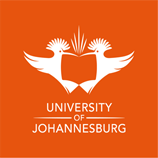The purpose of Applied GIS and Remote Sensing SLP is to train participants in critical application areas of GIS and Remote sensing to address local to regional social and environmental challenges.

The purpose of Applied GIS and Remote Sensing SLP is to train participants in critical application areas of GIS and Remote sensing to address local to regional social and environmental challenges. Understanding the spatial arrangement of social and environmental systems is a pre-requisite to addressing most of the problems that come with population growth and thereby implementing sustainability of resource utilisation which has become the core concern of management at all social hierarchies.
GIS and remote sensing offer the ideal platforms to aid in the assessment and monitoring of human activities and their impacts on resources including built-up services and natural resources. Although GIS and remote sensing are expanding in their scope, the SLP focuses on specific GIS and remote sensing contents that encompass most concepts and are of common interest among companies that practice and/or rely on the fields.
The GIS contents include how spatial data are represented using vector and raster data structures, how to create and where to find such data, how to use such data for computing spatial patterns of social and environmental phenomena, and how to build relationships between spatial phenomena to develop predictive models that decision-makers can rely on. Contents covered in remote sensing include characterisation of commonly used remotely sensed data, sources of freely available data, application of both GIS and remote sensing as well as machine learning techniques in urban and natural resources mapping.
The SLP is designed to accommodate multiple end-users of GIS and remote sensing, providing an opportunity to apply the acquired skills to their specific operational requirements. Similarly, the SLP is intended to enrich careers in different sectors such as environmental management, urban planning, spatial modelling, land use/land cover assessment, biodiversity, agricultural, mining, social, and health sectors.
In this regard, professionals who are already working in the private and public sectors can benefit from the course by keeping abreast with the latest technological advances in spatial technologies. Students of the SLP will acquire competencies that increase their competitive edge in the job market. In addition, currently employed or unemployed qualifiers of the SLP can be empowered to become entrepreneurs in the field since the technologies used in the course are mostly freely available.
Vibrant, multicultural and dynamic, the University of Johannesburg (UJ) shares the pace and energy of cosmopolitan Johannesburg, the city whose name it carries. Proudly South African, the university is alive down to its African roots, and well-prepared for its role in actualizing the potential that higher education holds for the continent's development.
UJ has transformed into a diverse, inclusive, transformational, and collegial institution, with a student population of over 50 000, of which more than 3000 are international students from 80 countries. This makes UJ one of the largest contact universities in South Africa (SA) from the 26 public universities that make up the higher education system.
The vision of the UJ is to be "an international University of choice, anchored in Africa, dynamically shaping the future". The mission can be described as follows: "inspiring its community to transform and serve humanity through innovation and the collaborative pursuit of knowledge".
These are underpinned by four values, namely: imagination, conversation, regeneration and ethical foundation.
The six strategic objectives provide a focused means for realising the Vision, Mission and Values of the University as set out above. They further represent a re-working of the original UJ Strategic Thrusts 2020 in the context of a wider positioning of the University as "The Pan-African" Centre for Critical Intellectual Inquiry, with the primary goal of achieving global excellence and stature.
The six strategic objectives are:
Recognized as the country's second strongest brand, UJ offers world-class, internationally recognized academic programmes based on curricula informed by cutting-edge developments in both undergraduate and postgraduate education, and that are designed to prepare students for the world of work and for global citizenship.
Our curriculum is increasingly reflective of previously marginalized scholarship that talks to a transformation and decolonisation agenda, with Africa at its core.
© 2025 coursetakers.com All Rights Reserved. Terms and Conditions of use | Privacy Policy